從2012年買進我的第一支手錶Citizen Men’s CA0020-56E Eco-Drive Titanium Watch,到2015年開始收集手錶,過去這2-3年內我的手錶數量大增。大部分我手中的錶都屬於美金$300以下的平價錶,其中也有一些是從Aliexpress買來的大陸廉價錶。當初會買大陸的廉價錶只是因為我想要看看美金$20-$30可以買到什麼樣品質的機械錶。從2017年開始,我逐漸的把手上不戴的手錶逐一的賣掉。之前寫的這篇文章:手錶收集近況更新(2018 Update)裡面提到我2017年被我買進以及賣出的手錶。現在來更新一下2018年被我賣出的手錶:
Seiko SNZG13 Men’s Automatic Black Dial Stainless-Steel Bracelet Watch 首先是這支讓我又愛又恨的Seiko SNZG13。之前我已經寫過一篇文章介紹它,所以我就不再多說了。總之,我很喜歡這支錶,特別是它的夜光效果把其他同等價位的手錶都打趴在地上。但是它有些小地方又讓我恨得牙癢癢,其中最讓我受不了的就是那個不能手動上鍊又不能停秒的7S36機蕊。如果Seiko可以把它升級到4R36機蕊,我可能永遠都不會把它賣了。Anyhow,最後我還是下定決心把它賣了。雖然這是我戴了好一段時間的二手錶,但是我發現Seiko的手錶真的很好賣。我把它登出去沒多久就賣掉了。
Seiko SARB065 Cocktail Time 這支是綽號”Cocktail Time”的Seiko文錶。這支錶在手錶愛好者的社群裡面是一支經典,因此我也就趁著eBay上價錢不錯的時候買了一支來玩玩。買來之後發現它跟我之前的Orient Sun and Moon Watch有一樣的問題:作為一支搭配西裝的文錶,它的厚度太厚;但是作為一支休閒用的錶它又太正式。還有就是有些錶大家都說好,但是你買來之後發現你就是感覺不到它有什麼令人興奮的地方。對我來說,這支錶就是這樣的一個例子:沒錯,它很好看,但是我對它就是沒感覺。最後的結果就是永遠躺在抽屜裡沒有機會戴它。這支錶目前已經停產。雖然Seiko有發表類似的錶SRPB43,但是新錶的機蕊是屬於低一個等級的4R35。這支錶也是登出沒多久就賣了。
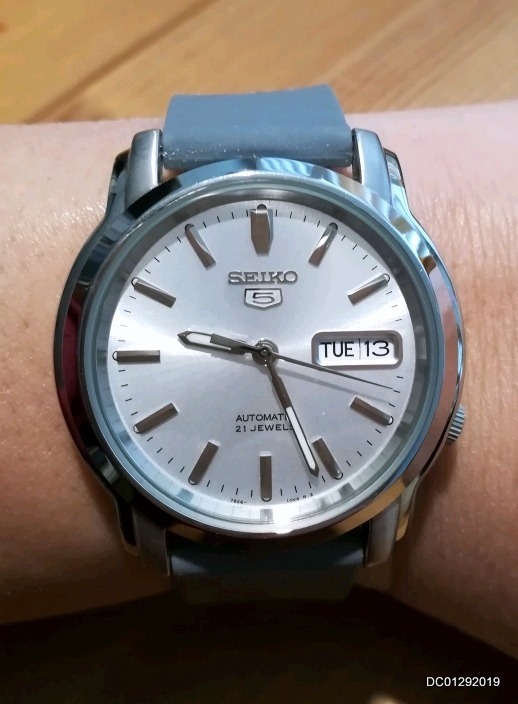
Seiko SNKK65 這支精工五號系列的手錶是我剛開始收集手錶的時候買的。當初買它的原因是因為它跟我過世的爺爺的手錶長得很像。我本來想要用它來紀念我過世的爺爺,但是我發現我戴它的機會不多。第一,以今天的標準來說它的錶徑太小(37mm)。第二,它的機蕊是不能停錶也不能手動上鍊的7S26。我個人是越來越不能忍受不能停錶的機蕊,所以就決定把它賣了,賣給本地的一個牧師。
Seiko SARB035 這支手錶和SARB033, SARB065同樣是手錶愛好者社群中的經典,也同樣是已經停產的錶。趁著Amazon在特價了時候買了一支。之所以買它只是因為想要看看它到底經典在哪裡。買來之後覺得也就不過是一支還不錯看的手錶,並沒有讓我太驚艷的地方。所以我連戴都沒有戴就把它賣了。這支倒是沒有我想像中的好賣,但是我還是有小賺一點。
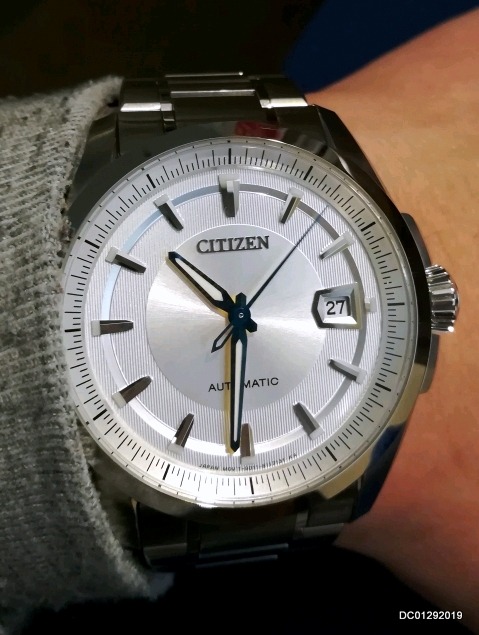
Citizen Men’s NB0040-58A “The Signature Collection Grand Classic” Stainless Steel Automatic Watch 我有一段時間對於Citizen旗下的Miyota 9015機蕊非常有興趣。Miyota 9015是一個每秒震動8次的所謂「高頻」機蕊。在日本的錶廠中最大的兩家是大家耳熟能詳的Seiko和Citizen。Seiko在他們的中低價位機械錶裡用的都是每秒震動6次的所謂「低頻」機蕊。如果你要買到Seiko高頻機蕊的手錶,那至少要好幾千美金。Miyota 9015是日本中低價位機械錶裡面唯一的一個高頻機蕊,因此我決定買一支來玩玩。
雖然每秒震動八次和六次聽起來沒有差很多,但是我真的覺得Citizen的這支手錶的秒針在走的時候比Seiko的機械錶平順很多。這支錶其實沒有什麼可以挑剔的地方。不管是機蕊、面盤、指針、到錶殼、錶帶都是一級貨。唯一有點美中不足的地方是它的分針稍微短了一點,還有我不是特別喜歡它的時針的形狀。對於一支美金$600的手錶來說,它其實真的是物超所值。但是,就像交男女朋友不是光看外在條件。這支錶雖然從客觀條件上來說無可指謫,但是我就是覺得不對味,之所謂「食之無味、棄之可惜」。最後下定決心把它賣了,但是卻沒有人願意出個好價錢。還好有個人願意跟我交易,於是我用這支錶換來了下面的Seiko SARG009。
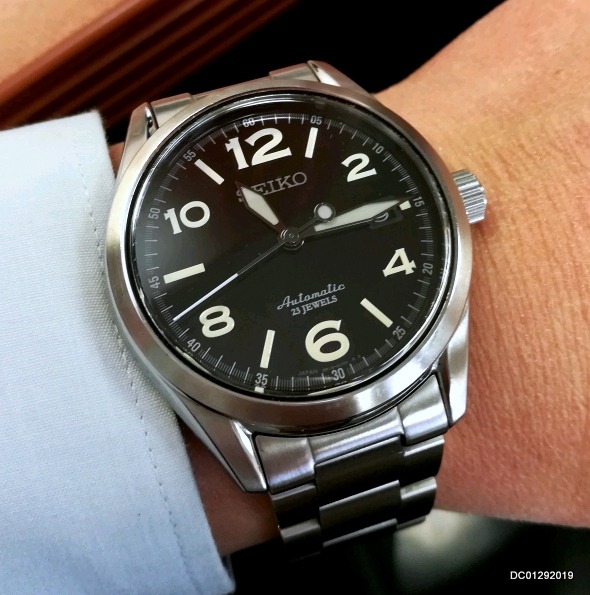
Seiko SARG009 這是一支停產好一陣子的手錶,市面上已經找不到新錶了。我之所以會注意到這支錶是因為我對於軍錶很有興趣,而這支錶很有軍錶的風格。再加上這支錶的阿拉伯數字有一些與眾不同的設計,這是我在別的手錶上從來沒有看過的。我曾經考慮過要買這支錶,但是因為市面上只有二手錶,而且二手錶賣的價錢比當初新錶賣的還貴,因此我就打消了主意。沒有想到竟然有人要用這支錶跟我換我的 Citizen Men’s NB0040-58A,我當然是欣然同意啦!
拿到這支錶之後沒有我想像中的驚艷。雖然它的數字設計很特別,但是整體來說只是一支普普的錶。最大的問題是它的機蕊明顯的已經需要保養,每天至少慢1-2分鐘,這對我來說已經超出我可以接受的範圍。還好,這支錶在手錶愛好者的社群中真的很搶手,我登出沒多久就賣給了一個來自英國的買家。
Seiko SARB017 Alpinist 好啦!這是我名單上最後一支Seiko。基本上我今年把Seiko的經典款都過手了一遍,最後全部都賣了。Seiko SARB017 Alpinist是另外一支手錶玩家社群中的經典。Seiko在今年年初的時候宣布停產這支手錶。停產的消息一出來,這支手錶馬上從$300漲到$400。我趁著這支錶還是$300多的時候買了一支。看到之後覺得沒有像大家口中所說的那麼神,所以我出價$400把它賣了,算是小賺一筆。
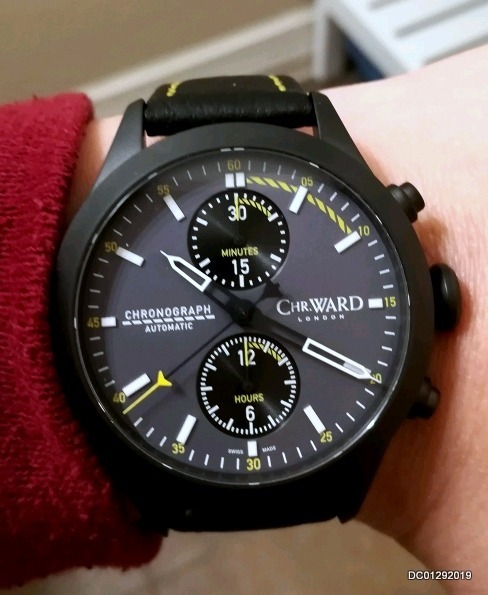
Christopher Ward C1000 Typhoon Cockpit 這支錶是我今年最難取捨的一支錶。這是2017暑假Christopher Ward跳樓大拍賣的時候搶到的。Christopher Ward在2017年的時候決定更換公司的logo,因此舊logo的手錶就分批大拍賣。Christopher Ward的跳樓大拍賣折價在30%-50%之間,而且每次跳樓大拍賣的時候他們的網站都會因為不堪負荷而當機。說實話,Christopher Ward的手錶品質真的沒話說。就算是用原價買我也覺得是物超所值,更不用說特價的時候了。自從買了這支錶之後,我又買了另外兩支Christopher Ward的潛水錶。我喜歡這支錶的另外一點是我一直很喜歡有碼錶功能的手錶。但是機械式的碼錶非常的貴,而且聽說保養起來也比一般的機械錶貴很多。能在特價的時候搶到這支錶讓我非常的開心。
既然這支錶這麼好,那我為什麼又把它賣了呢?只有一個原因:因為它沒有秒針。我買機械錶的一個主要原因就是喜歡看它平順運轉的秒針。如果沒有秒針,那我不乾脆買一支石英錶就好了,還省得以後花大錢保養。就為了這一點,這支錶在戴了一年之後被我賣給了一個住在休士頓的買家。
Ball Engineer II Ohio 如果要說有哪一隻錶不賣可惜,賣了也可惜的,那大概就是這支了吧!Webb C. Ball是美國19世紀末20世紀初的一位鐘錶師傅。西元1891年1月19日在Kipton, Ohio發生了一起重大的火車對撞事故。事後調查發現出事的主要原因是其中一輛火車的駕駛員的手錶慢了四分鐘,因而導致兩輛原本應該錯開的火車同時面對面的走在同一條鐵軌上。這起事故之後,當時的鐵路局便聘請Mr. Ball來管制所有鐵路員工所使用的手錶。從此之後,只有經過Mr. Ball認證通過Official Railroad Standard的手錶才可以給鐵路員工使用。後來,Mr. Ball也開始出售以他名字為品牌的手錶,而Official Railroad Standard也成為這個品牌最有名的賣點。
Ball Watch就像很多當年有名的鐘錶公司,在1970年代受到石英錶的市場衝擊而開始走下坡。在1990年代Ball被一群香港的投資人買下來,並且把Ball的總部從美國搬到瑞士,因此今天的Ball被承認為瑞士錶,但是流著美國血統,幕後的大老闆卻是亞洲人。說這些並不是要貶低Ball的手錶品質。如果你在手錶社群裡面逛逛就會發現大家對於Ball的評價非常的高。我因緣際會的用很低的價錢買到兩支Ball Engineer II Ohio,我必須承認它的做工真的很不錯,也很漂亮。但是對我來說他有一點太正式,卻又不夠正式到可以戴在正式的場合。還有,我知道如果我把它賣了,我可以賺回一筆不小的收入。我把這兩支錶放在架子上放了很久,每隔幾天就把它拿出來看一下,因為我沒有辦法下定決心是要留還是賣。最後,我還是把兩支都賣了。
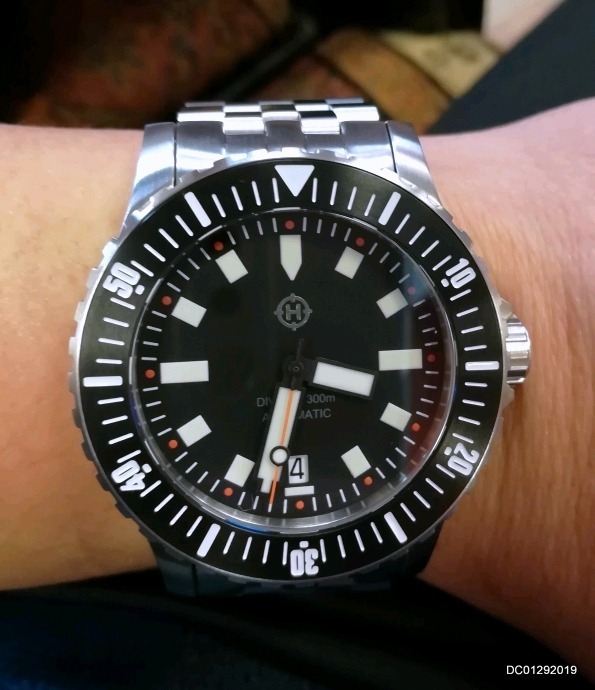
Helm Vanuatu Helm是一家小家的獨立錶廠,也就是所謂的微品牌(microbrand)。這支錶整個就是粗獷。當初之所以會買這支錶是因為看上它的時針和分針造型很特別,而且他的價錢很實惠($275)。買來之後我對於它的造型非常的滿意,組裝品質也沒有話說,唯一的問題就是稍微重了一點。但是戴了幾天之後我就發現它有一個大問題,那就是它的錶冠會卡到我的手腕。常常當我把手錶拿下來的時候就會看到手腕附近的皮膚被錶冠刮成紅色的一片。我本來想說多戴個幾天看會不會比較好,結果是越戴我的皮膚傷得越嚴重。好吧!既然是這樣,那就只好忍痛割愛了。
Rodina R005 Arabic White Dial Bauhaus Rodina是一個中國的路邊攤品牌,但是它用的是中國最大的錶廠「海鷗」所生產的機蕊。這支錶是一支所謂的「致敬錶」(homage),而致敬的對象是德國的NOMOS Tangente。基本上這支錶跟NOMOS Tangente除了錶面上的logo不一樣其他看起來是完全一樣的。NOMOS Tangente的價錢是Rodina R005的十倍,所以裡面用的機蕊自然不是同一個等級。
這支錶的設計風格是所謂的包浩斯學派(Bauhaus)。包浩斯是十九世紀初在德國成立的一所藝術學院。這所學校成立於西元1919年,而僅僅14之後遭到納粹政府的壓迫而關閉。雖然這所藝術學校只存在了14年,但是它們所領導的設計風格(如今稱為包浩斯學派) 卻對後代的藝術、設計、和建築有極大的影響。我想你們可以看得出來這支錶的設計風格很簡約,但是它有一種特別的美感。我很喜歡這支錶,但是不常戴,而且我越來越不喜歡戴homage,所以最後就把它賣了。
Glycine Airman GMT GL0064 Glycine據說以前是一家中高檔的瑞士錶廠。但是因為銷售不佳,公司瀕臨倒閉,還好另外一家錶廠Invicta把它收購了。Invicta本身是一家走低價路線的錶廠,因此很多人覺得如今的Glycine不再有當年的聲譽和地位。我在買這支錶之前從來沒有用過GMT(也就是有兩個時區)的手錶。這是我入手的第一支GMT錶,趁著eBay特價的時候買的。說實話,從見到它的第一眼我就沒有很喜歡它。留著它的原因是我想要有一支GMT錶,但是我覺得它整體的質感比起同等價位的Hamilton或是Christopher Ward差很多。還有就是它的表耳(lug)的形狀很突出,我覺得戴在我的手上不是很好看。看我把它批評的一文不值,最後當然是被我賣了。
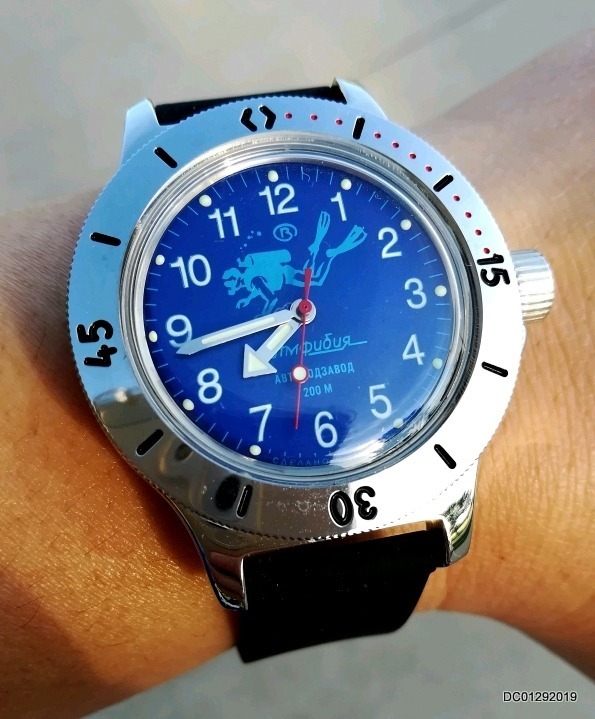
Vostok Amphibian Diver 120656/100652 這兩支俄國生產的潛水錶價格很便宜(大約美金$70左右),很多玩錶的玩家多少都有一兩支。其中第一支的錶盤上有一個潛水員,在國外的手錶社群中這支錶有一個綽號叫做Scuba Dude,如果翻成中文大概就是「潛水的老兄」。
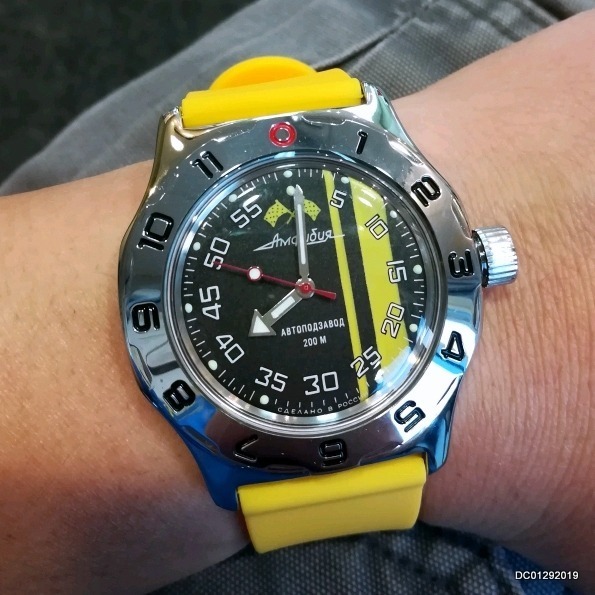
如果你對俄國生產的東西有點瞭解,你大概會知道俄國的產品通常感覺很粗糙(這點跟日本產品完全相反),小細節不是很注重(不像德國人對小細節斤斤計較),用的材料也很差,但是該有的功能一項也不少,而且還有一些巧思。這支錶一拿到手上我就知道不是什麼名貴的東西,但是我戴了它整整一個月,它竟然一個月下來差了不到五秒,這已經比勞力士還要準了。 Vostok生產的機蕊還有一個特點就是它的錶冠拉出來的時候感覺好像是斷了一樣,因此第一次拿到Vostok手錶的人常常會以為他們的錶壞了。其實沒有壞,這是Vostok的一個別有巧思的防震設計。這支錶我戴了一個月,之後覺得沒什麼新鮮,所以就把它賣了。下面那支Vostok我只拿出來戴了幾秒鐘就賣了。根據我的買家的說法,他戴了我賣給他的Scuba Dude沒幾天它就壞了。對於俄國錶,我應該是再也不會買了。
Traska Freediver Traska是一家新成立的獨立錶廠。我是在Kickstarter這個群募平台上發現它的。我一看到這支錶就非常的喜歡,所以我很快的就在Kickstarter上資助它。如果你有參加過群募,你會知道群募的產品從集資結束到產品到你的手上通常要等好幾個月甚至半年到一年。就是在這段等待的時間我對這支錶的熱情慢慢的冷卻了。還有就是我進出手上的錶多了之後,我開始越來越在意我手上的錶如果有一天我不想要了會不會賣不出去。以我個人的經驗,大牌子的錶像是Seiko, Citizen, Hamilton等通常比較好賣;就算要在市場上放一段時間最後還是可以賣出去。但是小的獨立品牌就不是這麼一回事了。 這些小的獨立品牌紅的時候很好賣,但是一旦熱潮退去之後就可能乏人問津。因為這個原因,我拿到這支錶之後根本連戴都沒有試戴就直接把它賣了。
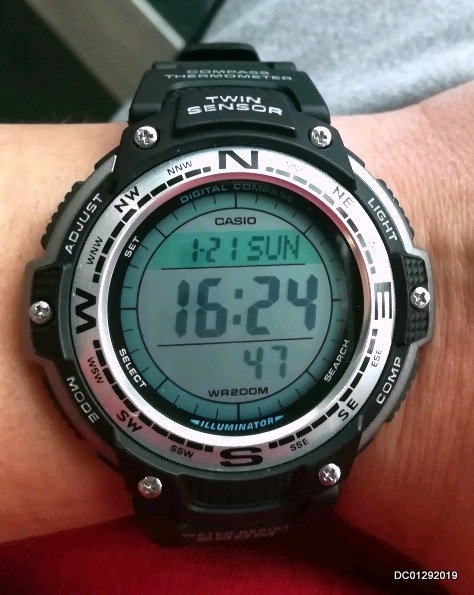
Casio SGW100-1V 卡西歐的電子錶我想就不用多說了。這支錶是我修理東西、整理後院、打掃家裡和上健身房的時候戴的,正是我們所謂的beater。之所以把它賣了是因為我買了另外一支卡西歐G-Shock來當我的beater,所以這支錶留著沒什麼用,乾脆把它賣了。這支錶買的時候本來就不值幾個錢,賣了只小虧了幾塊錢。
最後一張照片是幾支拉哩拉雜的錶。最左邊的是我還沒開始收集手錶以前戴的Timex Expedition石英錶。 我對Timex的石英錶印象不是很好,因為它的機蕊聲音非常大聲,大到我把它放在抽屜裡面,抽屜關起來我還是可以聽到滴答滴答的聲音。中間三支是我在Aliexpress上撿來的便宜手錶,品質都很差。當初我之所以會買只是因為我想要看看中國生產的便宜手錶品質如何。看完之後覺得就是這樣,沒什麼好說的。
最右邊那支則是在Watchuweek上面紅了一段時間的Tevise潛水錶。這支錶當時在Gearbest上特價一支$15而且還免運費。你如果光看照片真的會覺得這是一支很漂亮的錶,而且又很便宜,還有很多人說它物超所值,所以我就買了一支來玩玩。結果我一拿到手上就後悔了:它的錶框是可以旋轉的,但是錶框非常的鬆,轉起來一點紮實感都沒有。錶帶是廢物就不用說了,這個價位的錶帶我也沒有什麼期待。最糟糕的是它的錶冠跟機蕊的銜接不是很好,因此在調時間的時候有的時候調得動有的時候調不動。所以我學到的教訓是買手錶光看照片是不準的。
這幾隻錶我都用很低的價錢賣出,倒是Tevise賣的比我當初買的價錢還高,而且跟我買的那個人還對它讚不絕口,看來Tevise的顏值真的不錯。
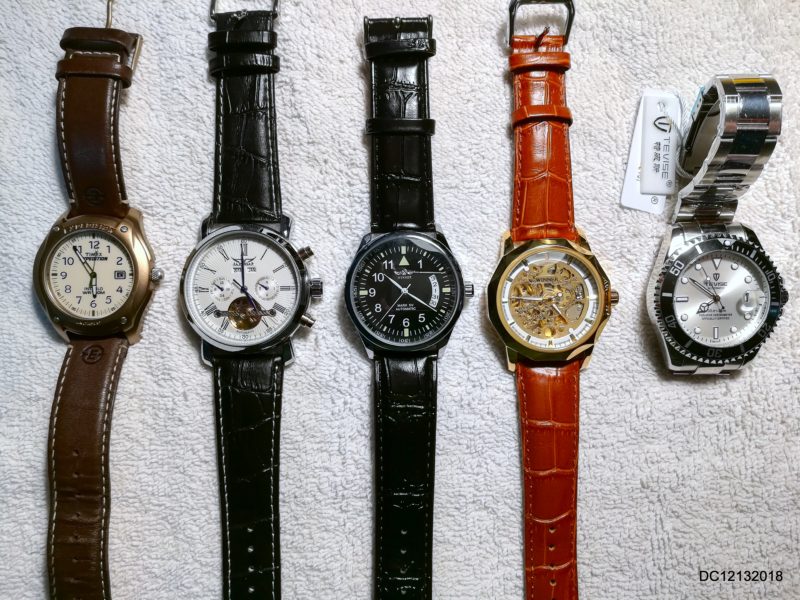








 In this price range, you have a lot of choices. First thing first, I do not recommend you buying a digital piano in this price range, so let’s put that to rest. Categorically speaking, you have 3 good options and 2 bad options. You should also read my
In this price range, you have a lot of choices. First thing first, I do not recommend you buying a digital piano in this price range, so let’s put that to rest. Categorically speaking, you have 3 good options and 2 bad options. You should also read my  At this price point, you begin to see some serviceable used vertical (upright) pianos. In my opinion, digital pianos are still the better options in this price range, but if you insist on buying an acoustic piano you should be able to find a decent one if you are patient. Let’s talk about digital pianos first.
At this price point, you begin to see some serviceable used vertical (upright) pianos. In my opinion, digital pianos are still the better options in this price range, but if you insist on buying an acoustic piano you should be able to find a decent one if you are patient. Let’s talk about digital pianos first. In this price range, you are likely to find two categories of vertical pianos:
In this price range, you are likely to find two categories of vertical pianos: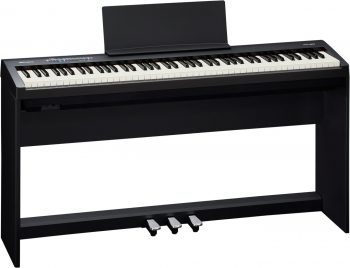 If you have a budget of $1,000 or less, your best option is to buy a digital piano. As I stated in the
If you have a budget of $1,000 or less, your best option is to buy a digital piano. As I stated in the  There are a few important rules of thumb to remember if you decide to buy a used acoustic piano:
There are a few important rules of thumb to remember if you decide to buy a used acoustic piano: